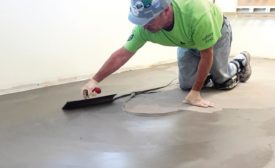Installation How-To
Technical Focus: The Evolution of Grouts and Mortars
Over the last several decades, the types of grout and mortar products available on the market have drastically changed, offering consumers and professionals more choices for specified projects
Read More
We’re rolling out the red carpet of flooring knowledge!
Stay in the know on the latest flooring retail trends.
JOIN TODAY!Copyright ©2025. All Rights Reserved BNP Media.
Design, CMS, Hosting & Web Development :: ePublishing













